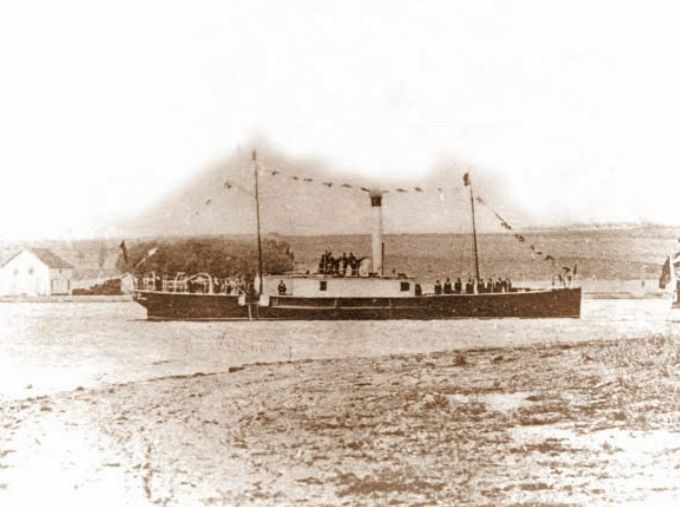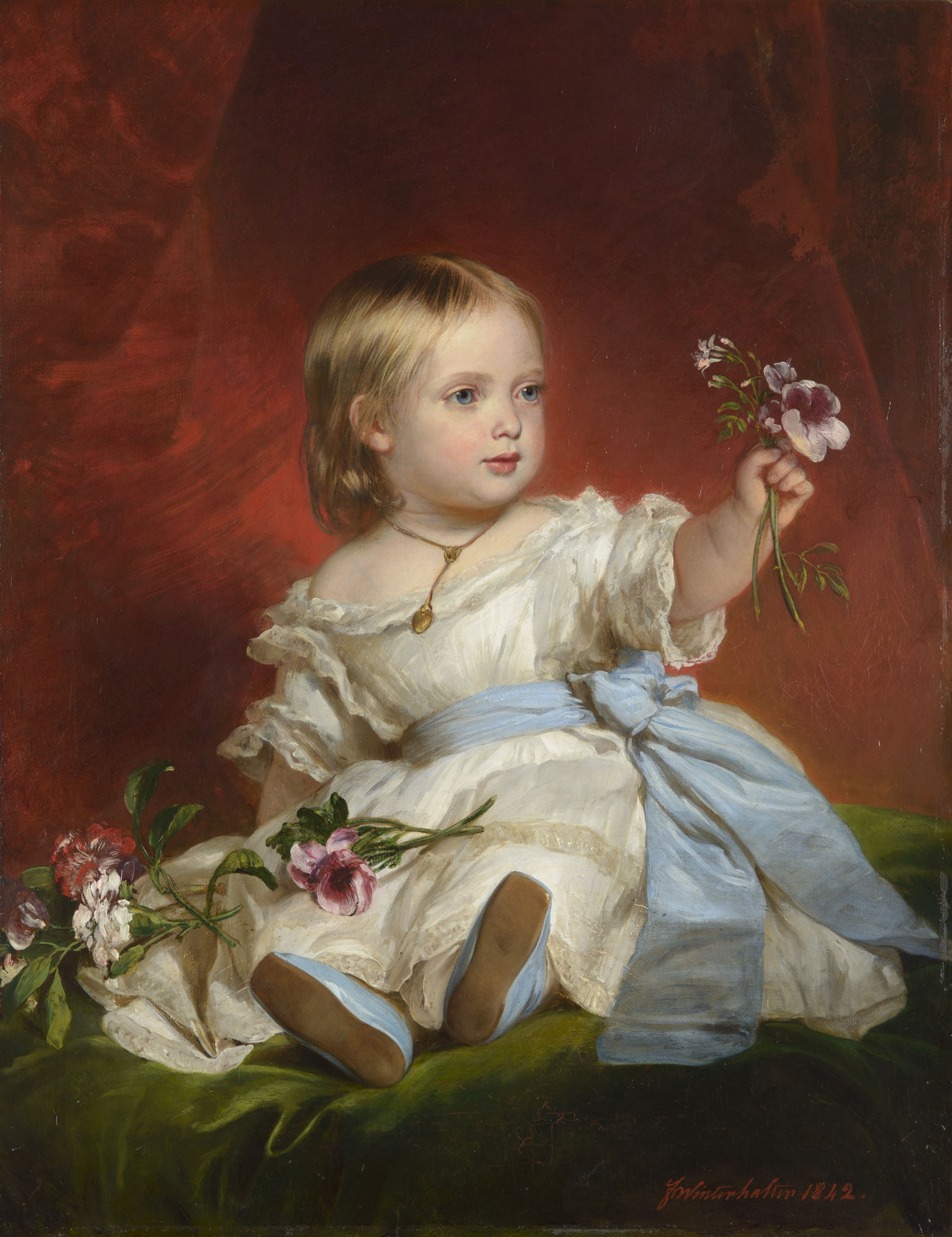|
Carmen Sylva
Pauline Elisabeth Ottilie Luise of Wied (29 December 18432 March 1916) was the first queen of Romania as the wife of King Carol I from 15 March 1881 to 27 September 1914. She had been the princess consort of Romania since her marriage to then-Prince Carol on 15 November 1869. Elisabeth was born into a German noble family. She was briefly considered as a potential bride for the future British king Edward VII, but Edward rejected her. Elisabeth married Prince Carol of Romania in 1869. Their only child, Princess Maria, died aged three in 1874, and Elisabeth never fully recovered from the loss of her daughter. When Romania became a kingdom in 1881, Elisabeth became queen, and she was crowned together with Carol that same year. Elisabeth was a prolific writer under the name Carmen Sylva. Family and early life Born at Castle Monrepos in Neuwied, she was the daughter of Hermann, Prince of Wied, and his wife Princess Marie of Nassau. Elisabeth had artistic leanings; her childhoo ... [...More Info...] [...Related Items...] OR: [Wikipedia] [Google] [Baidu] |
Queen Elisabeth Of Romania
Pauline Elisabeth Ottilie Luise of Wied (29 December 18432 March 1916) was the first queen of Romania as the wife of King Carol I from 15 March 1881 to 27 September 1914. She had been the princess consort of Romania since her marriage to then-Prince Carol on 15 November 1869. Elisabeth was born into a German noble family. She was briefly considered as a potential bride for the future British king Edward VII, but Edward rejected her. Elisabeth married Prince Carol of Romania in 1869. Their only child, Princess Maria of Romania (1870–1874), Princess Maria, died aged three in 1874, and Elisabeth never fully recovered from the loss of her daughter. When Romania became a Kingdom of Romania, kingdom in 1881, Elisabeth became queen, and she was crowned together with Carol that same year. Elisabeth was a prolific writer under the name Carmen Sylva. Family and early life Born at :File:Schloss_Monrepos_Neuwied.jpg, Castle Monrepos in Neuwied, she was the daughter of Hermann, Prince of ... [...More Info...] [...Related Items...] OR: [Wikipedia] [Google] [Baidu] |
Queen Consort Of Romania
Consorts of Romanian monarchs were persons married to the Romanian monarch during his reign. All monarchs of modern Romania were male with the title of King of the Romanians, but all Romanian consorts were women with the title of Queen of Romania and style Majesty, rather than ''Queen of the Romanians''. The following women were Queens of Romania as spouses of the kings of modern Romania between 1859 and 1947: Princesses of the United Principalities House of Cuza House of Hohenzollern-Sigmaringen Queens of Romania House of Hohenzollern-Sigmaringen Queens consort and Prince Consort of Romania (in pretence) House of Romania Timeline This is a graphical Graphics () are visual images or designs on some surface, such as a wall, canvas, screen, paper, or stone, to inform, illustrate, or entertain. In contemporary usage, it includes a pictorial representation of data, as in design and manufacture ... lifespan timeline of Romanian Consorts. They are listed in ... [...More Info...] [...Related Items...] OR: [Wikipedia] [Google] [Baidu] |
Order Of Queen Maria Luisa
The Royal Order of Noble Ladies of Queen Maria Luisa is an Order created by King Charles IV of Spain by royal decree on April 21, 1792, at the request of his wife, Queen Maria Luisa, to reward noble women who distinguished themselves for their services and talents. As such, it was established as an honour reserved only for women. History The Order was defined as a strictly female reward system, ruled by the Queen and composed of thirty members reserved for the Spanish high nobility. The first secretary of the Order was Don Miguel de Bañuelos y Fuentes, retired Knight of the Order of Charles III, and General Stewart of the Army. In 1796 the King raised the Order to a nobiliary dignity, granting their holders and their spouses the protocolar treatment of excellence, equating to Grandee of Spain and Knights Grand Crosses of the Order of Charles III. Later, during the short reign of Joseph Bonaparte (Joseph I of Spain), a decree was signed on September 18, 1809, dissolving all ... [...More Info...] [...Related Items...] OR: [Wikipedia] [Google] [Baidu] |
Dame (title)
''Dame'' is an honorific title and the feminine form of address for the honour of damehood in many Christian chivalric orders, as well as the British honours system and those of several other Commonwealth realms, such as Australia and New Zealand, with the masculine form of address being ''Sir''. It is the female equivalent for knighthood, which is traditionally granted to males. Dame is also style used by baronetesses in their own right. A woman appointed to the grades of the Dame Commander or Dame Grand Cross of the Order of Saint John, Equestrian Order of the Holy Sepulchre, Most Honourable Order of the Bath, the Most Distinguished Order of Saint Michael and Saint George, the Royal Victorian Order, or the Most Excellent Order of the British Empire becomes a dame. A Central European order in which female members receive the rank of Dame is the Order of St. George (Habsburg-Lorraine), Imperial and Royal Order of Saint George. Since there is no female equivalent to a Knight Bac ... [...More Info...] [...Related Items...] OR: [Wikipedia] [Google] [Baidu] |
Orders, Decorations, And Medals Of Romania
The National Decorations System of Romania ( ro, Sistemul Național de Decorații) is divided into six categories, listed below. It was re-established in 1998 after a 50-year period in which Romania used a Soviet-style system of decorations. It is very similar to the system used in Romania during the interwar period In the history of the 20th century, the interwar period lasted from 11 November 1918 to 1 September 1939 (20 years, 9 months, 21 days), the end of the World War I, First World War to the beginning of the World War II, Second World War. The in .... The list is ordered in descending order of the awards' rank in the National System of Decorations. The system National decorations # Order of the Star of Romania # Ordinul național "Serviciul Credincios" – National Order of Faithful Service, ''(National Order "Faithful Service")''; # National Order of Merit (Romania); # Crucea națională "Serviciul Credincios" – (''National Cross "Faithful Service"''); # M ... [...More Info...] [...Related Items...] OR: [Wikipedia] [Google] [Baidu] |
Romanian War Of Independence
The Romanian War of Independence is the name used in Romanian historiography to refer to the Russo-Turkish War (1877–78), following which Romania, fighting on the Russian side, gained independence from the Ottoman Empire. On , Romania and the Russian Empire signed a treaty at Bucharest under which Russian troops were allowed to pass through Romanian territory, with the condition that Russia respected the integrity of Romania. Consequently, the mobilization of the Romanian troops also began, and about 120,000 soldiers were massed in the south of the country to defend against an eventual attack of the Ottoman forces from south of the Danube. On , Russia declared war on the Ottoman Empire and its troops entered Romania through the newly built Eiffel Bridge, on their way to the Ottoman Empire. Due to great losses, the Russian Empire asked Romania to intervene. On , the first Romanian Army units crossed the Danube and joined forces with the Russian Army. Romanian proclamation of in ... [...More Info...] [...Related Items...] OR: [Wikipedia] [Google] [Baidu] |
Berlin
Berlin ( , ) is the capital and largest city of Germany by both area and population. Its 3.7 million inhabitants make it the European Union's most populous city, according to population within city limits. One of Germany's sixteen constituent states, Berlin is surrounded by the State of Brandenburg and contiguous with Potsdam, Brandenburg's capital. Berlin's urban area, which has a population of around 4.5 million, is the second most populous urban area in Germany after the Ruhr. The Berlin-Brandenburg capital region has around 6.2 million inhabitants and is Germany's third-largest metropolitan region after the Rhine-Ruhr and Rhine-Main regions. Berlin straddles the banks of the Spree, which flows into the Havel (a tributary of the Elbe) in the western borough of Spandau. Among the city's main topographical features are the many lakes in the western and southeastern boroughs formed by the Spree, Havel and Dahme, the largest of which is Lake Müggelsee. Due to its l ... [...More Info...] [...Related Items...] OR: [Wikipedia] [Google] [Baidu] |
Hohenzollern-Sigmaringen
( en, Nothing without God) , national_anthem = , common_languages = German , religion = Roman Catholic , currency = , title_leader = Prince , leader1 = Johann , year_leader1 = 1623–1638 , leader2 = Karl Anton , year_leader2 = 1848–1849 , demonym = , stat_year1 = 1835 , stat_pop1 = 41,800 , area_km2 = , area_rank = , GDP_PPP = , GDP_PPP_year = , HDI = , HDI_year = , today = Hohenzollern-Sigmaringen was a principality in Southwestern Germany. Its rulers belonged to the senior Swabian branch of the House of Hohenzollern. The Swabian Hohenzollerns were elevated to princes in 1623. The small sovereign state with the capital city of Sigmaringen w ... [...More Info...] [...Related Items...] OR: [Wikipedia] [Google] [Baidu] |
Alexandra Of Denmark
Alexandra of Denmark (Alexandra Caroline Marie Charlotte Louise Julia; 1 December 1844 – 20 November 1925) was Queen of the United Kingdom and the British Dominions, and Empress of India, from 22 January 1901 to 6 May 1910 as the wife of King-Emperor Edward VII. Alexandra's family had been relatively obscure until 1852, when her father, Prince Christian of Schleswig-Holstein-Sonderburg-Glücksburg, was chosen with the consent of the major European powers to succeed his second cousin Frederick VII as king of Denmark. At the age of sixteen Alexandra was chosen as the future wife of Albert Edward, Prince of Wales, the son and heir apparent of Queen Victoria. The couple married eighteen months later in 1863, the year in which her father became king of Denmark as Christian IX and her brother was appointed king of Greece as George I. Alexandra was Princess of Wales from 1863 to 1901, the longest anyone has ever held that title, and became generally popular; her style of dress ... [...More Info...] [...Related Items...] OR: [Wikipedia] [Google] [Baidu] |
Victoria, Princess Royal
Victoria, Princess Royal (Victoria Adelaide Mary Louisa; 21 November 1840 – 5 August 1901) was German Empress and Queen of Prussia as the wife of German Emperor Frederick III. She was the eldest child of Queen Victoria of the United Kingdom and Prince Albert of Saxe-Coburg and Gotha, and was created Princess Royal in 1841. She was the mother of Wilhelm II, German Emperor. Educated by her father in a politically liberal environment, Victoria was married at age 17 to Prince Frederick of Prussia, with whom she had eight children. Victoria shared with Frederick her liberal views and hopes that Prussia and the later German Empire should become a constitutional monarchy, based on the British model. Criticised for this attitude and for her English origins, Victoria suffered ostracism by the Hohenzollerns and the Berlin court. This isolation increased after the rise to power of Otto von Bismarck, one of her most staunch political opponents, in 1862. Victoria was empress for on ... [...More Info...] [...Related Items...] OR: [Wikipedia] [Google] [Baidu] |








